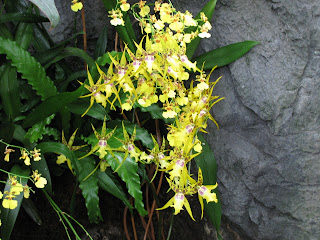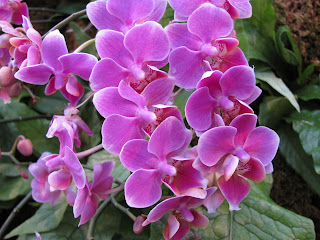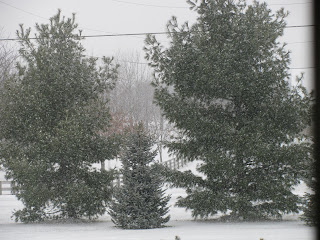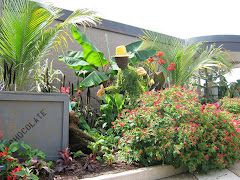A trip to the annual Orchid Exhibit at the
Franklin Park Conservatory in Columbus, Ohio is a great way to escape the cold weather. I planned this trip to coincide with
the Conservatory World Tour week, this year from January 23rd.-29th., which gave me a reason to get out of the cold and into the world of plants.

Click on the above picture for a list of other blogs that are part of the Conservatory World Tour courtesy of
Our Little Acre.
I love visiting the Conservatory and try to add the trip to my schedule many times during the year. You really can see different phases of plant growth and you always see something new. Franklin Park is very good about making exhibits fresh, so you can always look at plants in a new way. I am excited to share my trip with you as part of the
World Tour, so excited that I spent two days there.
The highlight of my visit was the Orchid Forest Exhibit. The first day of my visit, I was lucky to attend a talk about orchids in general. The docent was very knowledgeable and I learned a lot from her. Also, there is information on large posters posted throughout the conservatory.
Orchids are the largest family of flowering plants. They grow on every continent except Antarctica.Orchids have three sepals that are topped by three petals.The labellum is the third petal and is the one that our eyes are drawn too. This is the petal that attracts the pollinator. I did not know that each orchid has a specific pollinator that resembles the type of flower. Orchids can grow on rocks, in soil, and on other plants.
The docent showed us a vanilla bean and told us that it comes from a Vanilla Bean orchid. It needs to be pollinated on the day it blooms, or the flower will fall off. Now I know why pure vanilla is so expensive! This particular orchid is mostly found in Mexico and Madagascar, according to one of the posters. The Vanilla Bean orchid is often hand pollinated by commercial growers.
Phalaenopsis orchids resemble moths. These orchids are usually available in stores for gardeners to purchase. The Oncidiums look like
Dancing Ladies. A Cymbidium orchid's flower is used for corsages. It is even used as a garden plant on the west coast of the United States. The Dendrobiums are used for making Hawaiian leis. The Platystele orchid has a flower so tiny that it can fit on the nose of President Roosevelt on a U.S. dime.
Here are some pictures of the orchids at the Franklin Park Conservatory. Sit back and enjoy your visit
!






























I am a member of the
Home Depot Garden Club. Once you register, you will receive coupons, from time to time, by email. I was recently sent a coupon for a 25% discount on an orchid. I plan on picking one out very soon! While at Franklin Park, I purchased a book titled
The Gardener's Guide to Growing Orchids, a Brooklyn
Botanic Garden All Region Guides. I just started reading it. I am hoping to be prepared to take care of the orchid I bring home.
My next post will be about the second part of my visit
.
 A black Anthurium in the Tropical Rainforest
A black Anthurium in the Tropical Rainforest A white Anthurium in the Pacific Water gardens
A white Anthurium in the Pacific Water gardens A pink Anthurium in the Pacific Water gardens
A pink Anthurium in the Pacific Water gardens A black Anthurium in the Tropical Rainforest
A black Anthurium in the Tropical Rainforest A white Anthurium in the Pacific Water gardens
A white Anthurium in the Pacific Water gardens A pink Anthurium in the Pacific Water gardens
A pink Anthurium in the Pacific Water gardens Click on the above picture for a list of other blogs that are part of the Conservatory World Tour courtesy of Our Little Acre.
Click on the above picture for a list of other blogs that are part of the Conservatory World Tour courtesy of Our Little Acre. 




































